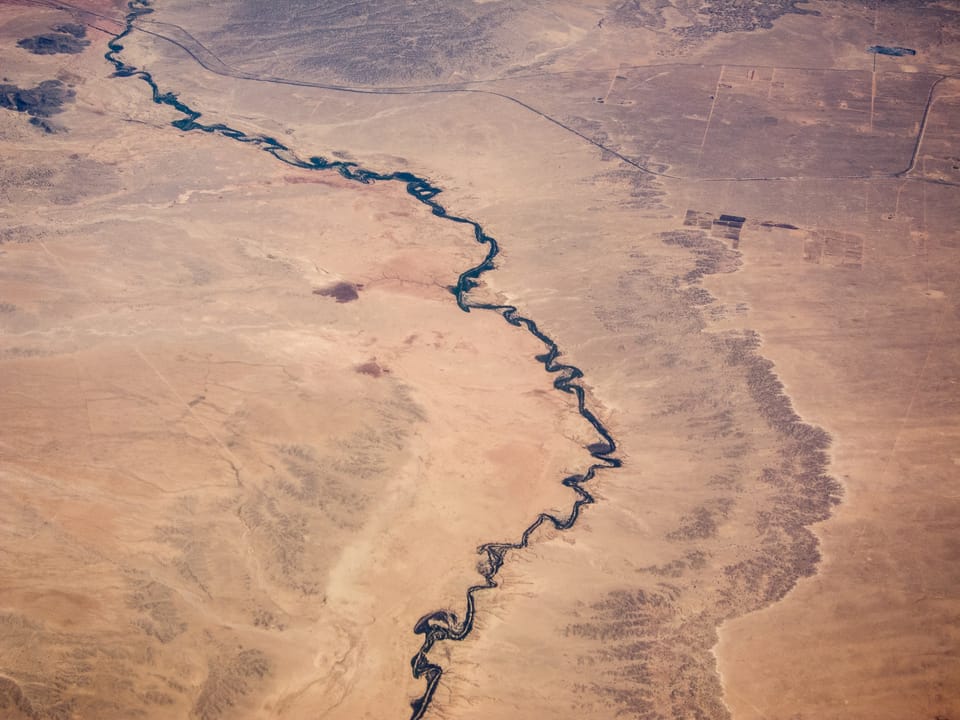What should we make of Isaiah’s prophecy of “rivers in the desert?”
Click here for the lectionary readings for tomorrow, the fifth Sunday in Lent. As usual, on this Saturday, I’ll offer some comments on the Old Testament reading, Isaiah 43:16-21. This is my summary of it:
It’s true that in the past God saved you Israelites by doing things none could imagine: (a) He parted the waters of the Red Sea so the Israelites could walk across and (b) He drowned the Egyptians who were in hot pursuit of the Israelites.
But don’t build your hope on that past event. Build your hope instead on the fact that He’s the same God. He can and will do things beyond anything you can imagine. He can even do the opposite: He can make a pathway in the desert, even make rivers run in the desert.
Don’t get me wrong. I’m not saying that’s what He’s going to do next. What I’m saying is, watch and see. He will act on behalf of the people He has chosen, to achieve the goal of peace on earth and goodwill to all men which will only come when they follow after His heart (worship Him) rather than their own hearts.
In chapter 43, for the first time, Isaiah refers to God as “Saviour” (verse 3). From this point forward, Isaiah will call God “Saviour” several times. This point marks the end of judgment and the beginning of comfort.
For centuries people have pondered the words in verses 19-20:
Behold, I am doing a new thing; now it springs forth, do you not perceive it? I will make a way in the wilderness and rivers in the desert. The wild beasts will honour me, the jackals and the ostriches, for I give water in the wilderness, rivers in the desert, to give drink to my chosen people.
There has been no literal fulfilment. The desert is still desert – except for some parts converted into farmland through the application of the inventions of mankind. So, what are Isaiah’s “rivers in the desert?”
I’m drawn to John H Oswalt’s suggestion:
Perhaps Isaiah is considering the whole period of redemption that began with the return [described in Ezra-Nehemiah] from exile [in Babylon] and culminated in the formation of the church. Surely that sweep of history was, in its own way, as dramatic as the first exodus had been and offered as many miraculous events. The ultimate redeeming work of Christ in conquering sin was even more earth shaking than making rivers in the desert would be.
Isaiah probably expected the coming of the Messiah to take place immediately upon the return. That it did not, does not invalidate the nature of his vision. For those who would urge that this sweeping concept of redemption is expecting too much of the prophet, one can appeal to such passages as Hag. 2:6-9 or Zech. 12-14, where this kind of vision is clearly present. Although hardly proving this point, it is certainly suggestive that the following segments focus on undeserved grace (43:22-28) and the giving of the Spirit (44:1-5), which are the message of the gospel. All in all, this seems to me the most satisfying solution to the question. God would indeed produce evidence far surpassing the exodus that he was the Saviour, the only Saviour, of the world.
We are Isaiah’s “rivers in the desert.” The Church of the Saviour is no longer imaginary. Now it’s real.
We are called to be a people who embody the Saviour in community. Because we have received His Spirit, we praise him through the behaviour we demonstrate and demand. Are we rivers in the desert of thirst for peace, harmony, and flourishing? Do our neighbours praise us?
To learn more about Rama, click here.


